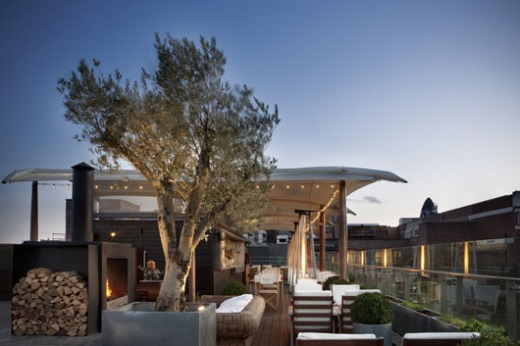Shad Thames was a ghost street last week, as the more fortunate Conranners downed tools and jetted off to Lombardy for the 2012 Salone Internazionale del Mobile (aka the Milan Furniture Fair, or simply Milan Design Week).
To make sure they didn’t have too much fun, we set them some homework: to report back on their ‘top threes’ from Milan.
So, here goes: an esoteric tour of the best of Milan, in two installments, brought to you by Conran’s design and retail experts. First up, Conran & Company gave us their favourites.
Jill Webb, Brand Development Director, Conran & Company

Top three new designers/brands to watch
1. La Chance
La Chance is a new furniture and lighting company which debuted at MOST, Tom Dixon’s five-floor extravaganza in the National Museum of Science and Technology.
Jean-Baptiste Souletie and Louise Breguet, the designers behind the startup, say that La Chance “epitomises their vision of French design”. The people they’ve worked with, though, are defiantly global: 11 designers representing 7 countries.

The collection, Jekyll and Hyde, present two executions of each piece: an understated ‘Jekyll’ version in oiled wood, neutral tones and softly-brushed metal, and a Technicolor Hyde alternative.
French or not, it’s a playful and eye-catching collection – fortunately backed up by great design. Check out the Borghese sofa by Noé Duchaufour Lawrance, for example.

The sober Dr. Jekyll…

…and the eye-catching Mr. Hyde.
2. Objekten
Next up was Objekten, also over at MOST (definitely the place to be). “Powered by influential new media entrepreneurs and innovative designers” they may claim to be, but their designs were much better than their copy.

3. Y’a Pas Le Feu Au Lac
Y’a Pas Le Feu Au Lac – a French expression meaning ‘no need to rush’ – was born of a collaboration between Grégory and Marie Bodel and design house FX Balléry in 2011.
Their new collection consists of a range of small, simple, functional wooden objects. Each piece feels like it has been plucked straight out of a dolls house – and they are all uncommonly beautiful.

Alice Walsh, Designer, Conran & Company
Top three new product ranges
1. CAST 001 by Sally Makereth
Like most of Milan’s highlights, Sally Makareth’s CAST 001 collection was found at Tom Dixon’s MOST.
Sally is an award-winning British architect, and CAST 001 consists of a range very sculptural outdoor furniture.
The pieces are made of reconstructed stone with patinated metallic finishes, lending them an unusual, semi-reflective quality.

2. Tom Dixon’s lamps
As Steve Carrell puts it, ‘I love lamp’. Tom Dixon was master curator in Milan, and his own designs didn’t disappoint, either.

His Etch Web lampshade is a wonderful, geometrical thing made from digitally-etched, copper-anodised aluminium. It comprises 60 irregular pentagons which throw savage, spiky shadows in every direction.
3. 1616 by Stefan Scholten and Carole Baijings
Stefan Scholten and Carole Baijings teamed up to create my Milan highlight: 1616, a colourful range of tableware for Japanese brand Arita.
Clean, simple shapes let colour do the talking: great swathes of pastel and dashes of bright yellow and orange.
Lovely stuff.

The Conran Shop‘s beady-eyed buyers will be unpicking the big trends and the best stands in Part 2, later today.


































